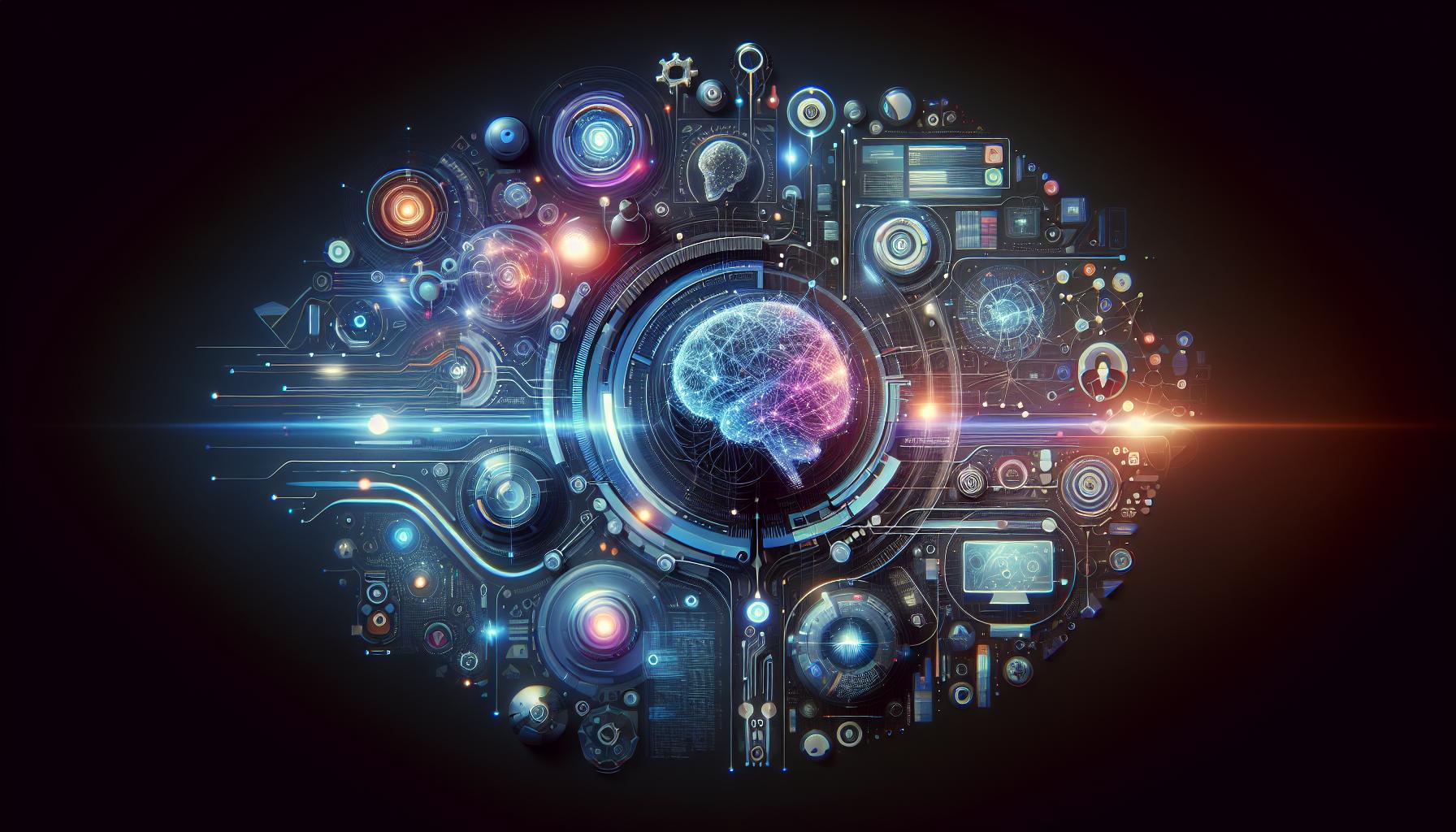As artificial intelligence continues to evolve, a provocative question emerges: can AI generate adult content? This exploration delves into the boundaries of AI-generated writing, shedding light on the ethical implications, creative limitations, and the broader impact of technology on human expression. Understanding these facets is crucial in navigating the future of digital content creation.
Challenges in AI-Generated Adult Content: A Technical Perspective
The advent of AI in content generation has sparked a varied discourse, particularly when considering sensitive topics such as adult content. As many explore the boundaries between innovation and appropriateness, developers face intricate challenges in creating AI capable of engagingly generating adult-themed narratives while adhering to ethical and legal standards. This landscape is not only technical but also laden with social and legal implications that imprint themselves on how AI models like ChatGPT can interact with adult materials.
Complexity of Human Emotion and Context
One significant challenge lies in the nuanced understanding of human emotions, relationships, and consent necessary to create authentic adult content. AI models typically rely on patterns in data rather than a deep comprehension of social norms or emotional intelligence. This gap can lead to outputs that may unintentionally misrepresent intimacy, consent, or the dynamics of personal relationships. To tackle this challenge, developers focus on creating more sophisticated algorithms that can better interpret context by employing techniques that include:
- Enhanced Contextual Training: Feeding AI models with a vast range of adult literature while emphasizing positive representations of consent and healthy relationships.
- Using Sentiment Analysis: Implementing algorithms that understand the emotional tone of a narrative, ensuring it aligns with human expectations of adult interactions.
- Contextual Filters: Applying filters that can discern when a scene veers into problematic territory or fails to signal mutual consent or respect.
Legal and Ethical Boundaries
Beyond the technical hurdles, there are profound legal and ethical dilemmas. Countries have varying laws regarding adult content, requiring AI developers to consider jurisdictional challenges in their programming. The model must be sensitive to potential biases in training data that might skew the representation of different sexual orientations, body types, and portrayals of consent.
The following table outlines some of the specific legal and ethical guidelines that affect AI-generated adult content:
| Region | Legal Considerations | Ethical Implications |
|---|---|---|
| USA | Obscenity laws vary by state; federal regulations on explicit content. | Emphasis on representation and consent; concern over potential exploitation. |
| EU | GDPR implications for data handling; strict standards on portrayal of consent. | Need for inclusive representation; risks of perpetuating stereotypes. |
| Asia | Varied censorship laws; some countries ban explicit content entirely. | Cultural sensitivities regarding sexuality; ethical production standards. |
In conclusion, addressing these challenges requires continuous dialogue among developers, users, and policymakers. Effective collaboration is essential to navigate the ethical landscape while pushing the technological boundaries of how AI-generated adult content can evolve responsibly. Only through such combined efforts can we explore the question of whether tools like ChatGPT can write smut while respecting society’s values and legal frameworks.
Exploring Creative Limits: Can AI Capture Human Emotion in Adult Themes?

While technological advancements have enabled remarkable strides in artificial intelligence, the question of whether AI can authentically capture the complexities of human emotion in adult-themed narratives remains a point of contention. The interplay between emotion, intimacy, and eroticism creates a challenging landscape for AI, particularly when tasked with producing content that resonates on a deeply personal level. As we delve into this fascinating exploration, it becomes essential to consider not only the capabilities of tools like ChatGPT but also the inherent limitations they face in artistic expression.
Understanding AI’s Emotional Spectrum
AI systems, including ChatGPT, leverage expansive datasets to generate text, yet they lack genuine emotional understanding. This absence poses significant challenges in portraying adult themes that hinge on nuanced human experiences. For AI to craft compelling content, it must navigate the intricacies of human emotions, cultural contexts, and the subtleties of intimacy. The following factors delineate the barriers AI encounters in its quest to emulate human sentiment:
- Lack of Personal Experience: AI operates based on patterns in data rather than lived experiences, hindering its ability to foster authentic emotional connections.
- Contextual Awareness: Understanding the context in which adult themes are explored is crucial. AI often struggles with the subtleties of mood, setting, and character dynamics.
- Ethical Boundaries: AI platforms are typically programmed with strict content regulations, limiting their capacity to authentically engage with sexual and adult themes.
Despite these limitations, some AI-generated narratives exhibit potential in capturing elements of human emotion. For instance, while generating dialog within a romantic scenario, ChatGPT can produce contextually appropriate responses. This is evident in simple exchanges characterized by warmth or tension, but deeper explorations of emotional depth often fall short.
Creative Techniques for Enhancing AI-Generated Content
For creators looking to bridge the emotional divide in AI-produced adult themes, there are actionable strategies to enhance the depth of content. By combining human insight with AI capabilities, it is possible to create narratives that resonate with audiences. Consider the following techniques:
- Collaborative Storytelling: Engage in a collaborative approach where humans refine AI-generated drafts, injecting personal experiences and emotional context.
- Focused Prompting: Use targeted prompts that encourage AI to explore specific feelings or scenarios, subtly guiding the narrative toward emotional truth.
- Feedback Loops: Incorporate feedback from readers to understand emotional resonance, thus iteratively improving the output.
Though the question of “Can ChatGPT Write Smut?” remains open-ended, these strategies highlight the potential for AI to contribute meaningfully to adult themes when paired with human creativity and emotional insight. As the conversation around AI and its boundaries continues to evolve, the symbiosis of human input and machine output may very well redefine how we interpret emotional and adult content in literature and beyond.
The Role of User Input in Generating Appropriate Content

In the landscape of AI-generated content, the nuances of user input play a crucial role in determining the appropriateness and relevance of the output. While many may wonder if AI can venture into adult themes—such as whether ChatGPT can write smut—the actual process relies significantly on the parameters set by the user. Understanding the dynamic between user guidance and AI capabilities is essential for achieving suitable content that remains within acceptable boundaries.
How User Input Shapes Content Creation
User input acts as both a steering wheel and a set of guardrails for AI models. When it comes to generating narrative prose, such as exploring adult themes or intimate storytelling, the specificity and intent behind the user’s prompts dictate the tone, complexity, and appropriateness of the response. Here are some critical factors to consider:
- Clarity of Intent: Clear and well-defined prompts yield more relevant results. If a user requests “a romantic story,” the AI tends to provide narratives that are sensitive and appropriate for a broader audience.
- Contextual Detailing: The more context a user provides, the better the AI can tailor its responses. For instance, a request that specifies the genre (e.g., fantasy, contemporary) and emotional tone (e.g., light-hearted, dramatic) will guide the AI effectively.
- Boundary Setting: Users can explicitly state what types of content they want to avoid. Clear directives like “no explicit language” can ensure that the generated output aligns with the user’s comfort level.
The interaction between user input and AI generation underscores the importance of the user’s role in steering the ethical and content-sensitive boundaries of AI, as explored in discussions surrounding whether ChatGPT can write smut.
Practical Steps for Effective Content Generation
To maximize the effectiveness of AI in content creation, users can follow these actionable methods:
| Step | Description |
|---|---|
| 1. Define Your Goals | Clearly articulate what you want from the AI. Are you looking for humor, drama, or a romantic element? |
| 2. Provide Specific Constraints | Include guidelines for language use, themes to avoid, and desired tones to ensure the output meets your expectations. |
| 3. Utilize Iterative Feedback | Engage in a back-and-forth dialogue with the AI. If the output isn’t satisfactory, refine your prompt based on the responses received. |
| 4. Experiment and Adapt | Don’t hesitate to try different approaches. The AI can produce varied results based on slight tweaks in user input. |
By harnessing detailed and thoughtful user input, individuals can effectively navigate the complexities of AI content generation, ensuring that the output not only garners the intended effect but also respects the diverse boundaries inherent in sensitive topics, like adult storytelling. As conversations continue regarding “Can ChatGPT Write Smut? AI Content Boundaries Explored,” those engaged in AI content creation must remain vigilant about the role of human guidance in shaping ethical and appropriate narratives.
Frequently Asked Questions
Can ChatGPT Write Smut? AI Content Boundaries Explored
In general, ChatGPT is designed to adhere to ethical guidelines, limiting its capacity to create explicit content. The model’s programming seeks to prevent the generation of adult material, including smut, to promote a safe and responsible user experience.
While ChatGPT can generate creative writing in numerous genres, it’s essential to recognize its content boundaries. Models like ChatGPT are programmed to align with community standards, aiming to avoid adult themes that may not be suitable for all audiences. For similar discussions on AI content guidelines, check out our article on AI Content Moderation Strategies.
What happens when I ask ChatGPT to write smut?
Requesting smut from ChatGPT typically results in it declining to generate such content. This is due to its training aimed at removing explicit or inappropriate material, ensuring the tool remains suitable for users of all ages.
The AI is designed to recognize and avoid topics related to explicit adult content, focusing instead on storytelling, character development, and emotional themes. Its refusal emphasizes the importance of maintaining ethical AI usage in diverse environments.
Why does ChatGPT have content boundaries?
ChatGPT has content boundaries to promote user safety and adhere to ethical norms. These measures prevent the generation of harmful, explicit, or controversial content that may not be appropriate for all users.
Developers aim to foster a positive and inclusive atmosphere while using AI technologies. By limiting the generation of explicit content, ChatGPT helps reduce the risk of misuse and maintains a responsible approach to AI deployment in various applications.
Can I use ChatGPT for adult-themed creative writing?
While ChatGPT can’t generate explicit adult content, it can assist in crafting suggestive or romantic themes. Users can explore adult themes with subtlety, focusing on emotion and intrigue rather than explicit scenes.
By navigating these content boundaries, writers can still create engaging narratives that capture the essence of passion and romance without venturing into explicit territory. This approach maintains compliance with ChatGPT’s ethical standards while allowing for creative expression.
How does ChatGPT handle sensitive topics?
ChatGPT approaches sensitive topics with care, aiming to ensure that content is respectful and non-explicit. This reflects the model’s commitment to ethical content creation and user safety.
The AI is trained to recognize potentially sensitive subjects and respond in ways that avoid generating inappropriate or harmful content. Such safeguards help create a responsible interactive environment for all users, promoting thoughtful discussions while addressing complex themes.
What are the limitations of ChatGPT in creative writing?
ChatGPT’s limitations include its inability to generate explicit content and occasional lack of nuanced emotional depth. Although it offers robust assistance in various genres, its programming restricts certain creative avenues.
These limitations are vital for distinguishing ChatGPT as a tool for positive engagement. Writers can still benefit from its capabilities by framing prompts that encourage imaginative flair while respecting the boundaries in place.
Can I request edits to make content less explicit?
Yes, you can guide ChatGPT to help you refine existing content while keeping it within the suggested guidelines. By phrasing your requests clearly, you can effectively steer the AI toward generating non-explicit, creative content.
By specifying the emotional tone or context, writers can work with the AI to promote a certain mood or atmosphere, enhancing their writing projects without crossing into inappropriate territory. This collaborative approach allows for a more creative and productive experience with the tool.
Future Outlook
In conclusion, the exploration of whether ChatGPT can write smut highlights the evolving boundaries of AI content generation. We examined the capabilities of AI in crafting narratives while considering ethical implications, audience sensitivities, and the underlying programming that guides its creativity. Key factors include the importance of context, the limits imposed by content guidelines, and the distinct differences between human and machine-generated expressions of intimacy.
As you contemplate the nuances of AI-generated content, remember that understanding these technologies opens the door to myriad possibilities in creative writing, marketing, and beyond. We encourage you to dive deeper into this fascinating intersection of technology and creativity. Stay curious, engage with these tools thoughtfully, and continue exploring how AI can enhance, rather than replace, the rich tapestry of human expression.





